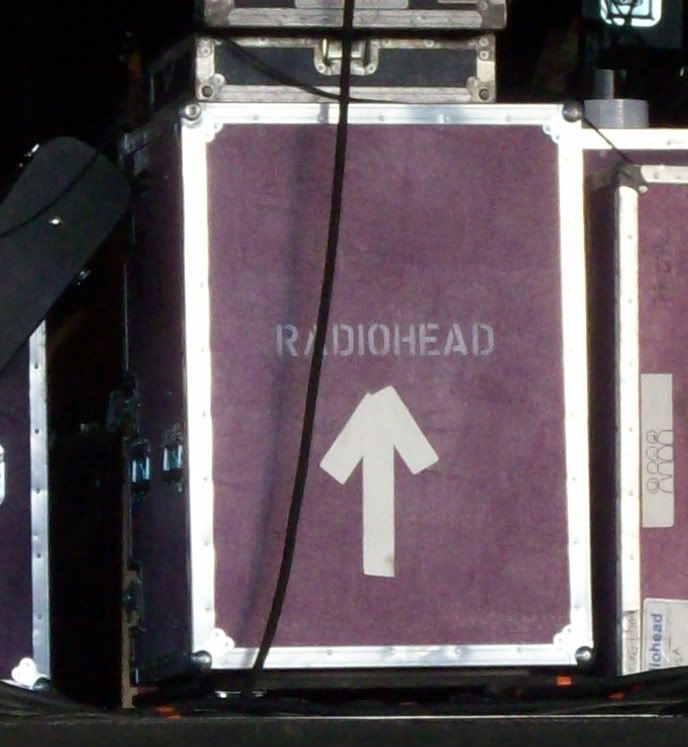by Kevin Eagan
The idea of "making it" in the world, to come from nothing to something through hard work and persistence, is such a deeply held American principle that we don't give it a second thought. When a child declares he will grow up to be an astronaut or top-forty musician, we encourage it — hell, it might come true. When he does grow up and he's struggling to make manager at McDonald's, we still don't discourage his dreams when he spends his days crooning out of key at his favorite karaoke bar, or watching episodes of NOVA in hopes to learn something about his astronaut life goals.
Of course, our cultural aptitude towards making it big doesn't fit with reality. In fact, it's one of the reasons why we celebrate the small things in life, like the single mother who manages to feed her children and pay her bills on time, or the drug addict who manages to kick her addiction. These are honorable goals, but still reflect the many divisions we still have between rich and poor in America.
Fiona Maazel's debut novel Last Last Chance attempts to demystify these preconceived ideas of success through her main character Lucy Clark, a drug addict trying to kick her addiction and find love along the way. In the process, she points a lot of the hypocrisy and fear America faces in a post-9/11 world, and she throws in the apocalyptic threat of a superplague for good measure.
Last Last Chance follows the chaos and mystery of drug addiction and impending plague through the first-person narration of Lucy, who has so many things going on in her life at once, it becomes difficult to follow. Despite being in her early thirties, Lucy's had a hard time making her way through life; as the novel begins, she's been kicked out of her home and is searching for some sense of purpose while working and living at a kosher chicken-processing plant. As she returns to her home in New York to attend her best friend's wedding, things in her life spiral out of control: she misses her friend's wedding after getting the dates mixed up (but no matter, her friend married the only man Lucy ever loved), her mom is willingly trapped in a serious crack addiction, and her father, a former scientist for the U.S. government, has just committed suicide because vials of the plague were stolen from his lab, unleashing a superplague. It's a lot to take in, but Maazel's sense of humor, irony, and her engaging prose style make for a great read.
As Lucy falls back into old patterns in her childhood Manhattan home, apathy sets in. Although she tries to break her addictions, she watches her mother die slowly from crack addiction (a very wealthy one, at that). Lucy tries to seek help for her own drug problems from local 12-step programs, and eventually rehab. While all of this takes place, the strain of superplague is making its way across the country, striking fear and uncertainty in an America that is already full of fear and uncertainty.
The superplague seems like a minor part of the plot in comparison to Lucy's many personal problems, but Maazel uses it to make some profound observations of modern America. The idea of bio-terrorism doesn't seem all that ridiculous — at least, no more ridiculous than the threat of nuclear war felt when Kurt Vonnegut began writing his post-apocalyptic prose in the 1950s and '60s.
It's this threat — one that has remained in the back of people's minds since 2001 even if it still hasn't happened — that makes Maazel's story work, because Last Last Chance becomes more about real fear of death than the self-absorbed complaints of a drug addict. It's not just the threat or the panic felt throughout the novel, it's the apathy and selfishness that comes as a result of bio-terrorism. As the cable news programs hype up the threat of superplague, Lucy observes that "panic is understudied for something so destructive and ubiquitous...What of the people whose panic results in apathy? The mind scrambling for purchase. Indecision or madness. Flee to the suburbs or flee this life." Through Lucy's narration, Maazel suggests that fear of the unknown can breed panic, and this is an apt observation in a time where we fear terrorism.
At the same time, Maazel has weaved an excellent story about the dangers of addiction. It's not a cautionary tale, but it does show how drugs have ruined Lucy's life. Unlike her mother Isifrid, Lucy is willing to try to overcome her addictions, and does learn to manage them in the end. Yet, the damage of addiction is still felt; she has difficulties with real relationships, and even though she spends time in rehab and frequents her 12-step meetings, she still deals with anxiety and her own personal fears. Lucy also seeks out a spiritual life, and at the end of the novel she speaks to God but hears nothing in return. Even though she manages to overcome drugs, not everyone does, and her sense of "making it" is never fully restored.
Throughout Last Last Chance, Maazel isn't after happy endings. Instead, Last Last Chance is a book about recognizing fear and uncertainty, and showing that even in the lowest places of society, the American dream of rags to riches isn't always possible. Maazel's voice is bitingly satiric and hopelessly pathetic, the exact opposite of a novelist out to make the world a happy place. As a result, Last Last Chance is the right portrayal for a 21st Century America, an America trying to make sense of chaos and fear despite our growing apathy.
Originally posted on Blogritics.org.


 This is not necessarily a bad thing, for many reasons. When cultural norms change, art, literature, and other creative outlets become more fluid, and people respond to the spirit of the age with an intelligent and relevant civic discourse. Only the old school traditionalists - those curmudgeons who see change as the end of the world as we know it - lambast and discourage this healthy pattern, a pattern that has made our great democracy run efficiently enough throughout the 20th Century.
This is not necessarily a bad thing, for many reasons. When cultural norms change, art, literature, and other creative outlets become more fluid, and people respond to the spirit of the age with an intelligent and relevant civic discourse. Only the old school traditionalists - those curmudgeons who see change as the end of the world as we know it - lambast and discourage this healthy pattern, a pattern that has made our great democracy run efficiently enough throughout the 20th Century.



